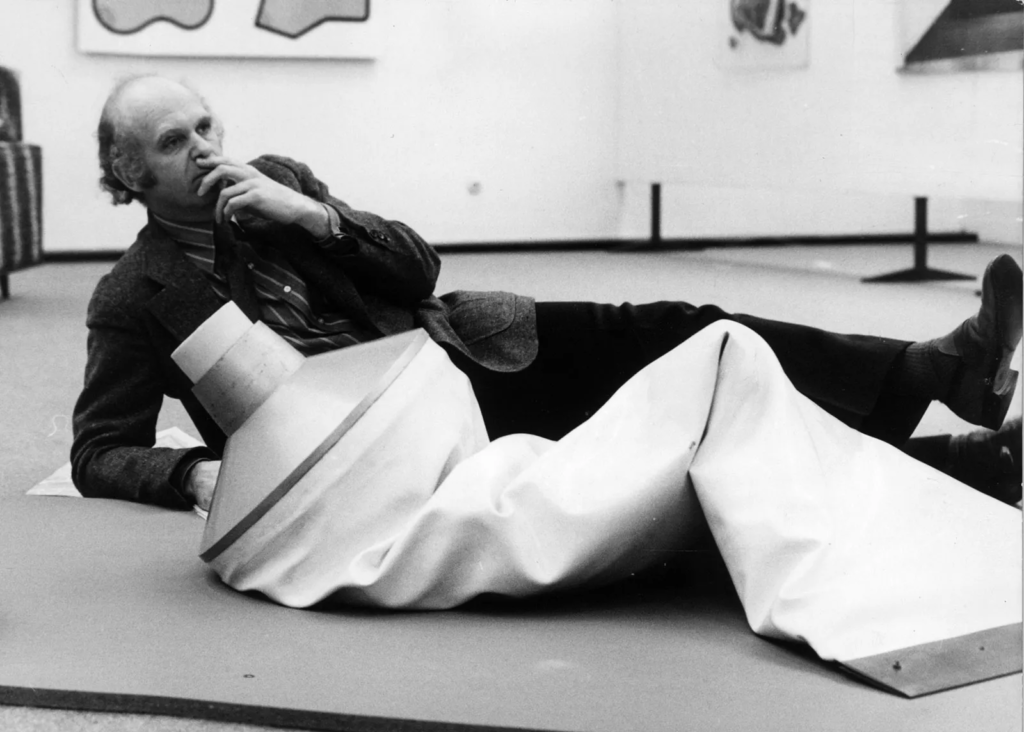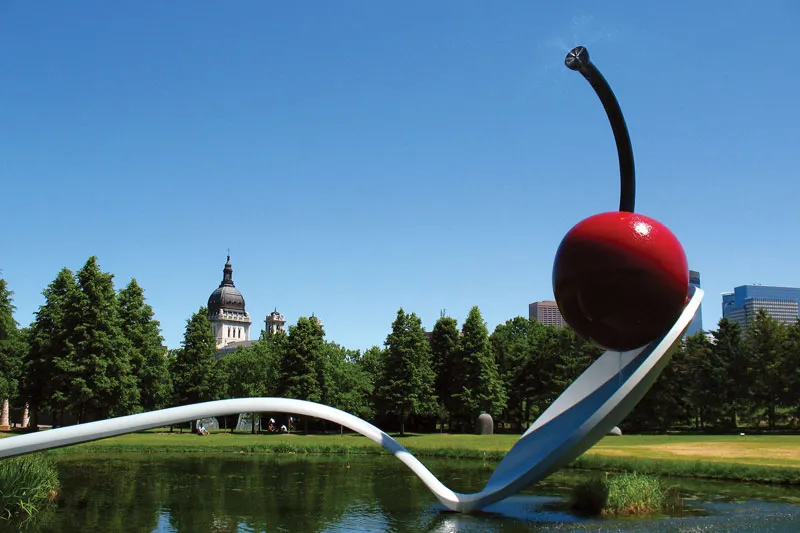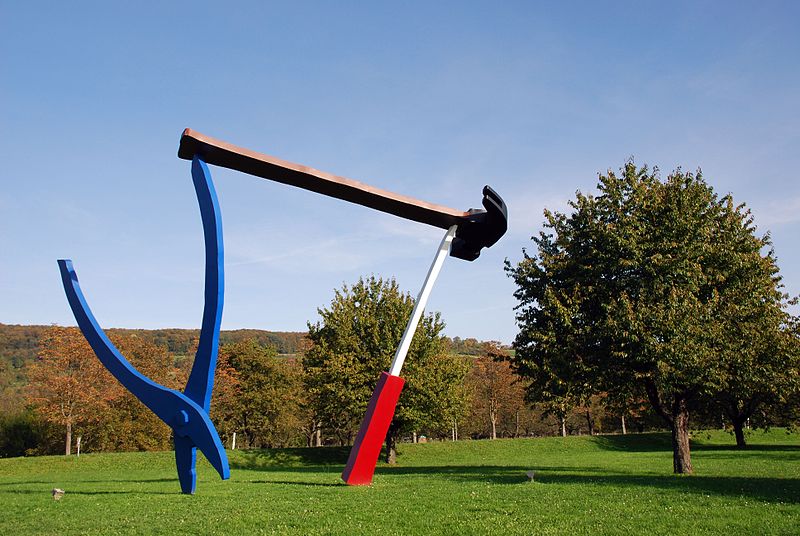Claes Oldenburg: Colossal Monuments | Sybaris Collection

The Swedish born artist, Claes Oldenburg (1927- 2022), started as a painter and functionality artist ahead of he phathomed with elements and types that took him to sculpture. As a make a difference of actuality, his early concepts on monumental sculpture had been first conceived as a collection of drawings andwatercolours that he referred to as Colossal Monuments.
In spite of Oldenburg´s Artwork staying categorized as Pop artwork a detour outlined his personal particular design and style: copy was replaced by monumental.
1. Claes Oldenburg is greatest recognised for his large-scale general public sculptures, but you most likely didn’t know he begun as a painter and performance artist. In simple fact, some artwork historians and critics has named it as a “Sculptor who moves concerning performance and graphic art”

Claes Oldenburg with Big Toothpaste Tube (1964), 1970.
Foto: Keystone/Hulton Archive/Getty Illustrations or photos
2. Oldenburg treats his perform as a totality in which key themes and motifs interweave in a selection of media. He has made a radical contribution to the heritage of sculpture by rethinking its materials, varieties, and topic make any difference.
2.1. Both his performances and paintings are carefully linked with his function in sculptures as we are about to see.
3. When he moved to New York in 1956, he became fascinated with the street daily life: keep home windows, neon lights, grafitti, and even trash. It was the sculptural prospects of these objects that led to a change in desire from painting to sculpture.
4. Essentially, his early concepts on monumental sculpture had been initially conceived as a series of drawings and watercolours that he called Colossal Monuments, and several of them remained unbuilt.
5. Around the 60s, he made The Retail store, a selection of painted plaster copies of food stuff, clothing, jewellery, and other things, with which he started off exploring components, scale, sorts, and so on.
6. At the same time, he began producing a series of happenings for which he created large objects built of cloth stuffed with paper or rags. Afterwards on, he mixed his do the job with The Retail store and his happenings, and exhibited big canvas-covered, foam-rubber sculptures of an ice-product cone, a hamburger and a slice of cake.
7. That is how he commenced with his incredibly popular gentle sculptures: by translating the medium of sculpture from tough to smooth, Oldenburg collapsed reliable surfaces into limp, deflated objects that had been topic to gravity and prospect.
8. Oldenburg was additional interested in banal goods of customer and each day existence, in aspect motivated by the statements of taking place and his everyday living in NY, which led him to be regarded as an legendary artist of the Pop-art motion.
9. Since the 80s, Oldenburg commenced doing work on commissions for general public spaces or establishments. Some of his most popular sculptures were manufactured all over this time, such as Spoonbridge and Cherry, Dropped Cone, Mistos (Match Cover) and Shuttlecocks, among the some others. All of these sculptures ended up created in collaboration with impartial critic and curator Coosje van Bruggen

Spoonbridge and Cherry, sculpture by Claes Oldenburg and Coosje van Bruggen, 1985–88 in the Minneapolis Sculpture Backyard of the Walker Art Middle, Minneapolis, Minnesota.
Foto: © Michael Rubin/Shutterstock.com
10. His function frequently disrupts the features of common objects—challenging our perceptions and unsettling our routines.Mentioned for their exaggerated scale, daring hues, and daring playfulness, Oldenburg’s sculptures stand out as a provocative combine of the ubiquitous and the unruly.

Graphic: Imaginative Commons Attribution-Share Alike 3. Unporte
